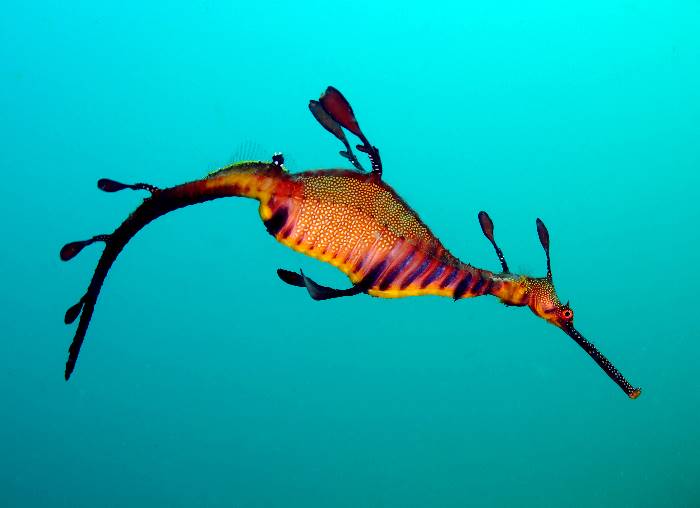
Phyllopteryx teaniolatus
FAMILY
Syngnathidae
TAXONOMY
Syngnathus taeniolatus Lacepиde, 1804, Bass Strait, Australia.
OTHER COMMON NAMES
English: Common seadragon.
PHYSICAL CHARACTERISTICS
Another remarkably distinct species. Body slender and elongate,
highly arched between head and tail. Head at a slight angle to
the body, with round eyes, very long snout, and small, upturned
mouth. Encased in bony ringlike plates, many containing longer
spines that have dermal leaflike flaps at the ends. Single dorsal
fin situated posteriorly, with 27–34 rays; anal fin with four or
five rays; pectorals with 20–23 rays. Tail prehensile, long, and
slender, without a caudal fin; pelvic fins, lateral line, and scales
absent. Coloration very ornate and somewhat varying—
background usually reddish, with numerous closely packed yellow
spots on head and body, bluish bars on sides of trunk and tail
base, and darker dermal flaps. Reaches 18 in (46 cm) in length.
DISTRIBUTION
Southern Australian coast from central New South Wales to
Rottnest Island (off Perth); also in Tasmania.
HABITAT
Typically found among algae, in kelp beds, and on rocky reefs,
down to about 164 ft (50 m).
BEHAVIOR
A mostly solitary species, hovering among algae and sheltered
rocky reefs, but also seen over sand. Individuals may move into
deeper waters when food becomes less abundant.
FEEDING ECOLOGY AND DIET
As with the leafy seadragon, food principally consists of small
crustaceans. Predators unknown but presumably larger fishes.
REPRODUCTIVE BIOLOGY
Many aspects of its reproduction are similar to that of the leafy
seadragon. Males carry roughly equivalent numbers of eggs,
which also are embedded in their skin. They usually have one
brood per season, and mating begins from October to November.
Young hatch after about two months, settling on the substrate.
Hatchlings do not have the elongated snout of the
adults, but it grows quickly; their elaborate dermal flaps are
much smaller. Juveniles resemble adults by about 4.7 in (12
cm) in length.
CONSERVATION STATUS
Listed as Data Deficient by the IUCN.
SIGNIFICANCE TO HUMANS
A popular aquarium species. Most specimens displayed are bred
in captivity. They can live for more than 10 years in aquarium
conditions.
Photo Gallery of - Weedy seadragon

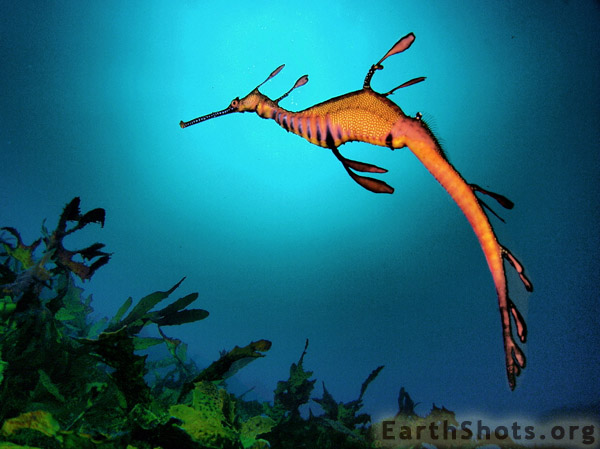
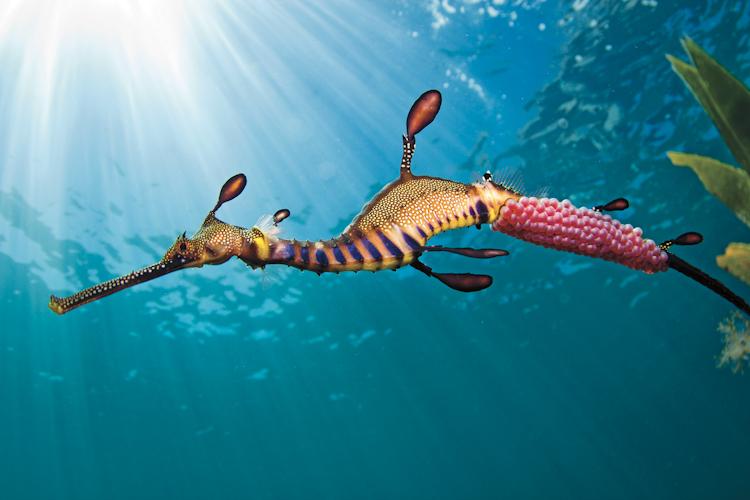
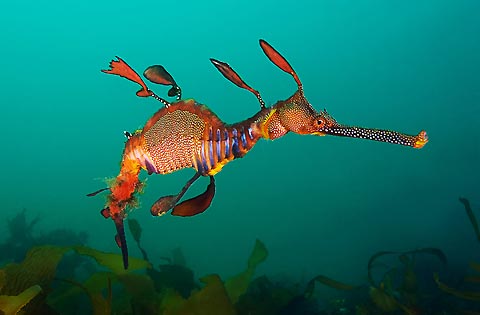
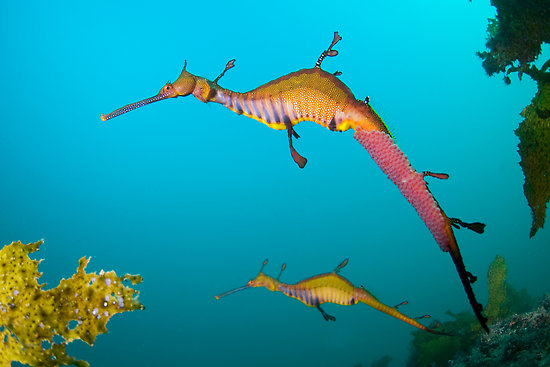
 Animalia Life
Animalia Life